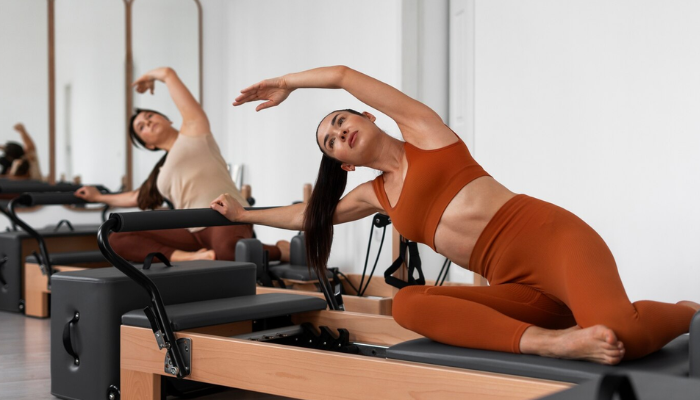To lead a holistic life, it is crucial to take care of yourself, of your body. The best way you can take care of your body is by indulging in exercise. While there are many different kinds of activities you can participate in to work out, the two most popular options are the gym or pilates. If you are someone who has just started their fitness journey, both the gym and Pilates will be great options. Both these physical activities are a great form of exercise and for staying healthy. Each activity will deliver different delivers for your body.
What is Pilates?
According to Healthline, “It is a method of whole body exercise designed to improve daily activities and livelihood.” The focus of this workout keeps your core engaged to develop functional and sustainable movement patterns throughout your body.
Let’s get to know these 5 things Pilates will do to your body that the gym won’t!
5 Pilates workout benefits
- Targets deep core muscles and stability: In this workout, your intrinsic core muscles, the transverse abdominis, pelvic floor, multifidus, and diaphragm are targeted deeply. These muscles will help in stabilising your spine and pelvis from within.
- Emphasises muscular control and precision: Unlike a gym workout, Pilates focuses on the quality and control of each movement, not just speed or reps.
- Strength and flexibility: It uniquely integrates strength and flexibility, while focusing on strengthening muscles as they lengthen under control (eccentric work). This helps in improving flexibility within the exercise itself, unlike separate gym stretching.
- Enhances body awareness: A lot of concentration is required in this workout. You will focus on your breath, alignment, and subtle muscle activation. This will help you develop a strong mind-body connection and help you understand body positioning.
- Improves spinal health and posture: Pilates enhances your spinal health and posture by consistently emphasising on spinal mobility and precise postural alignment in every exercise. On the other hand, gym workouts address posture less directly.

